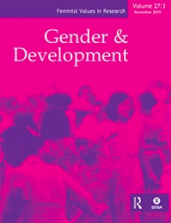Who will feed the World? The production challenge

Overview
This report focuses on the production challenge contained with the ambitious question of ‘who will feed the World?’ It acknowledges that this is just one part of the solution to feeding the world, along with waste management; (inter)national trade regimes; (inter)national rules, regulations and laws; the policies and practices of companies; etc.
The results of the report shows that policy matters more than geography and history when it comes to agricultural production and that unless strong regulation is in place to secure property rights, discipline land acquisition, and ensure transparent and participatory negotiations, adverse social and environmental effects will outweigh the benefits of large-scale agriculture. The need for investment in technology, infrastructure, market access, and institutions suggests that private investment could contribute in many ways which do not involve large-scale land acquisitions. On the contrary, a variety of institutional arrangements could be used to combine the assets of investors with those of local communities and small-holder farmers.
A four-pronged approach is argued for in this report: a mix of large- and small-scale, and LEI and HEI production methods. There are pros and cons in each approach, and the conditions for success or failure are very context-specific and contingent on a country’s institutions, tenure, policy, culture, and demographic considerations. The main conclusion is that whatever mix of the four-pronged approach is adopted, major commitment and investment by governments, development agencies, and private-sector actors, to reverse the trend of the last 20 years, will be essential to achieving sustained agricultural growth and to making a major dent in the levels of poverty and hunger.
Keywords
Additional details
Author(s)
Publisher(s)
ISBN
978-1-84814-833-8How to cite this resource
Citation styles vary so we recommend you check what is appropriate for your context. You may choose to cite Oxfam resources as follows:
Author(s)/Editor(s). (Year of publication). Title and sub-title. Place of publication: name of publisher. DOI (where available). URL
Our FAQs page has some examples of this approach.



